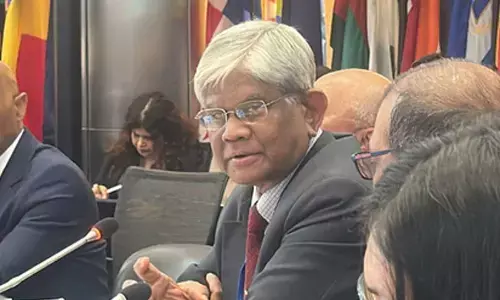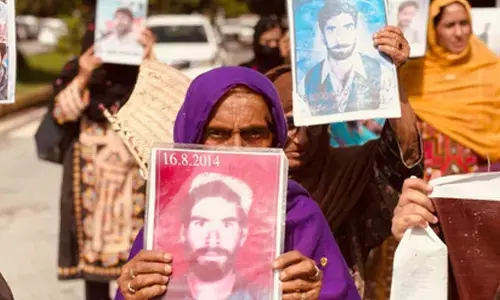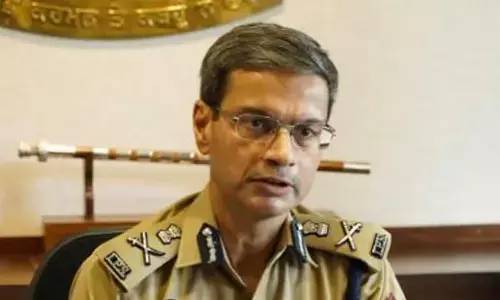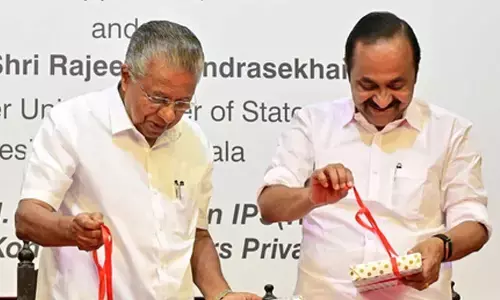Development challenges & Left extremism
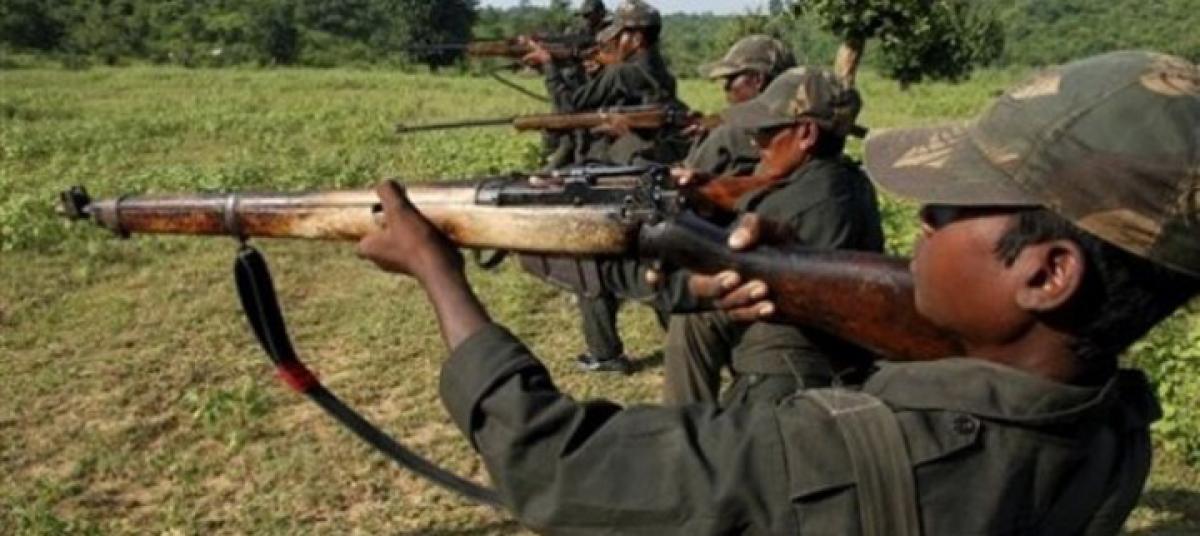
The Andhra Odisha Border popularly called AOB and the Telangana, Chhattisgarh borders are witnessing an intense renewed rivalry between security forces and Maoists, causing fresh concerns. The Left extremist-affected areas are reeling under the fear of police–Maoist crossfire further spreading. The local tribals were always the victim of this crossfire.
The police and intelligence studies also admit that Scheduled Castes and Scheduled Tribes constitute a significant chunk of the rank and file of Maoists even today. Though the professed welfare state spends billions on these sections, rampant discontent and deprivation continue to be clearly evident among these marginalised groups, providing for a breeding ground for Maoists
The Andhra Odisha Border popularly called AOB and the Telangana, Chhattisgarh borders are witnessing an intense renewed rivalry between security forces and Maoists, causing fresh concerns. The Left extremist-affected areas are reeling under the fear of police–Maoist crossfire further spreading. The local tribals were always the victim of this crossfire.
Meanwhile, Union Home Minister reviewing the security situation at the inter-state conference in Visakhapatnam called for an integrated offensive against Maoists. Such an assertion is nothing new. Several governments in the past treaded the same path. But, Maoist insurgency revived again and again with intermittent respite.
A couple of days later, he called for peace talks, of course, on the condition that the Maoists lay down the arms. Such carrot-and-stick policy is also not new to the Left extremist-affected areas. What was missing is the appreciation of social and economic causes of such a confrontation breaking out in interior forest and tribal-dominated areas.
A Planning Commission expert group report, Development Challenges in Extremist Affected Areas, in 2008 gave a detailed account of this dimension. But, successive governments continued to perceive the issue as a mere law and order problem. The State cannot counter the challenge posed by Left extremism unless the socio-economic milieu is affectively addressed. Decades of experience in several states proved this point time and again.
It’s wrong to view the Maoist challenge to the Indian State as similar to the extremist menace emanating from religious or ethnic frenzy. Maoists despite serious aberrations continue to be a political movement. The violence thrown up by a political movement cannot be challenged only by use of force as State alone does not have a monopoly over the use of force. The central government spends nearly Rs 20 lakh crore every year. The governments of both Andhra Pradesh and Telangana also each spend about Rs 1 lakh crore every year.
Still, disaffection continues to persist among certain sections of society, especially tribals, who are lured by Maoists to take to arms. No sustained administrative thinking and developmental action have gone into addressing this fundamental question except occasional response.
The police and intelligence studies also admit that Scheduled Castes and Scheduled Tribes constitute a significant chunk of the rank and file of Maoists even today. Though the professed welfare state spends billions on these sections, rampant discontent and deprivation continue to be clearly evident among these marginalised groups providing for a breeding ground for Maoists.
The acute agrarian distress, the changing modes of production that make these skills possessed by them irrelevant, high levels of pilferage in welfare spending, displacement in the name of development etc., have further buttressed the sense of discontent and alienation among such oppressed sections, especially in interior forest and tribal-dominated areas and habitations.
As the Planning Commission expert group said, “Dalits continue to face wide-ranging economic, social disadvantages, and day to day humiliation and degradation, denial of justice and violent atrocities. By and large, the Dalits condition is marked by high incidence of poverty, low education, limited employment opportunities and marginalisation in all spheres of public life. These deprivations are compounded by diverse types of violence that they are subject to.”
The Left extremist influence is more pronounced in tribal areas. There are notable causative factors for this. The Planning Commission report has rightly observed that the contradiction between the tribal community and the State itself has become sharper, translating into an open conflict in many areas.
Socio-economic infrastructure among the tribal people is inadequate, thereby contributing to their disempowerment and deprivation. Apart from poverty and deprivation in general, the causes of the tribal unrest are many: they include absence of self-governance, forest policy, excise policy, land-related issues, multifaceted forms of exploitation, cultural humiliation and political marginalisation. Land alienation, forced evictions from land and displacement also added to unrest.
Failure to implement protective regulations in Scheduled Areas, absence of credit mechanism leading to dependence on money lenders, consequent loss of land and often even violence by the State functionaries add to the problem. Adivasis are traditionally aware of the ecological interest of preserving forest cover, and the protection of biodiversity including wildlife conservation for their community life.
But, tribals are evicted from their traditional homes and habitations in the name of conservation or development without providing them a hospitable environment and alternative livelihoods to lead a better life. Thus, tribals are deprived of unhindered access to land, water and forests which they enjoyed for centuries. Precisely, this is providing a breeding ground for spread of Maoist activities as they could rally tribals on the issues of Jal (water), jangal (forests) and Jameen (land).
Development is inevitable to meet the needs of growing population and modern civilisation. But, the tribals who have to sacrifice their lands, homes and livelihoods find the new development paradigm incompatible for them. The skills possessed by tribals are largely irrelevant to the emerging industrial or infrastructural economy. Thus, development is proving to be violence on tribal life. The tribal culture is disrupted. Tribal hamlets are disintegrated. Tribal habitat is dismantled.
The tribals who were the masters of resources given by the Mother Nature are turning wage labourers in urban and semi-urban agglomerations. This is creating tremendous discontent among tribals. The Left wing extremism is thriving on this discontent. The State and the non-State action against Maoists is further worsening the conditions in tribal areas.
Realising the intimate and civilisational relationship between the tribals and the forest, the Forest Rights Act was enacted. Tribals hoped that this new entitlement legislation would liberate them from harassment by police and forest officials. But, the Act still remains unimplemented to a great extent.
Though there is a significant improvement in the recent past, still tribals lack access to democratic State apparatus. As the expert committee report observed, “the inhospitable terrain of the forests provides ample excuse for the restricted reach of the administration. It is not that there are no genuine difficulties faced by the administration.
It is that the negative attitude engendered by the social culture needs to be filtered out before what is genuine can be seen and remedied.” Thus, schools, hospitals, government offices in interior tribal areas are dysfunctional. This results in the spread of disaffection towards the democratic State.
Tribal land alienation is rampant. Tribal agriculture is underdeveloped. Tribal produce hardly gets remunerative prices. Tribals are the most displaced due to development. Their livelihoods are eroded. Apart from the physical and occupational displacement caused by large projects, in the case of the Fifth Schedule areas, unless the tribals are resettled in the same scheduled tract, they will face deprivation of the special rights that have accrued to them by virtue of the Schedule.
Thus, the agony of displacement turns out to be a subversion of Constitution with no reasonable alternative found so far.
To effectively check the Left wing Extremism, the dominant paradigm of development needs to be reviewed. The State policy to tackle this needs to be revisited. The concluding observation made by the Planning Commission expert group which comprised some of the well-known incisive minds sensitive to the concerns on the ground still provides an actionable frame work to address this.
It is critical for the government to recognise that dissent or expression of dissatisfaction is a positive feature of democracy, that unrest is often the only thing that actually puts pressure on the government to make things work and for the government to live up to its own promises. However, the right to protest, even peacefully, is often not recognised by the authorities and even non-violent agitations are met with severe repression. Greater scope and space for democratic activity will bring down the scale of unrest, as it would create confidence in governance and open channels for expression of popular discontent.
What is surprising is not the fact of unrest, but the failure of the State to draw right conclusions from it. While the official policy documents recognise that there is a direct correlation between what is termed as extremism and poverty, or take note of the fact that the implementation of all development schemes is ineffective,
or point to the deep relationship between tribals and forests, or that the tribals suffer unduly from displacement, the governments have in practice treated unrest merely as a law and order problem. It is necessary to change this mindset and bring about congruence between policy and implementation. There will be peace, harmony and social progress only if there is equity, justice and dignity for everyone.








